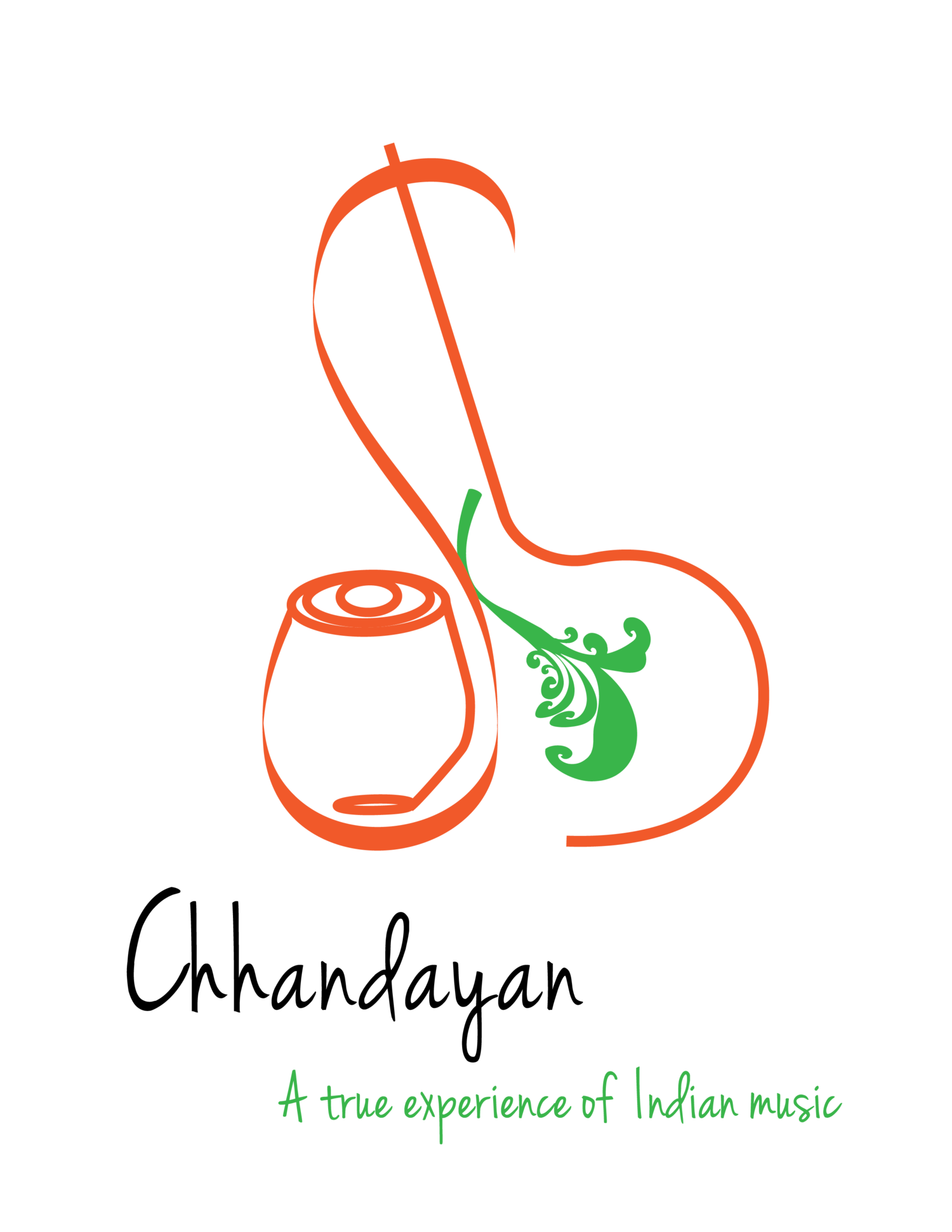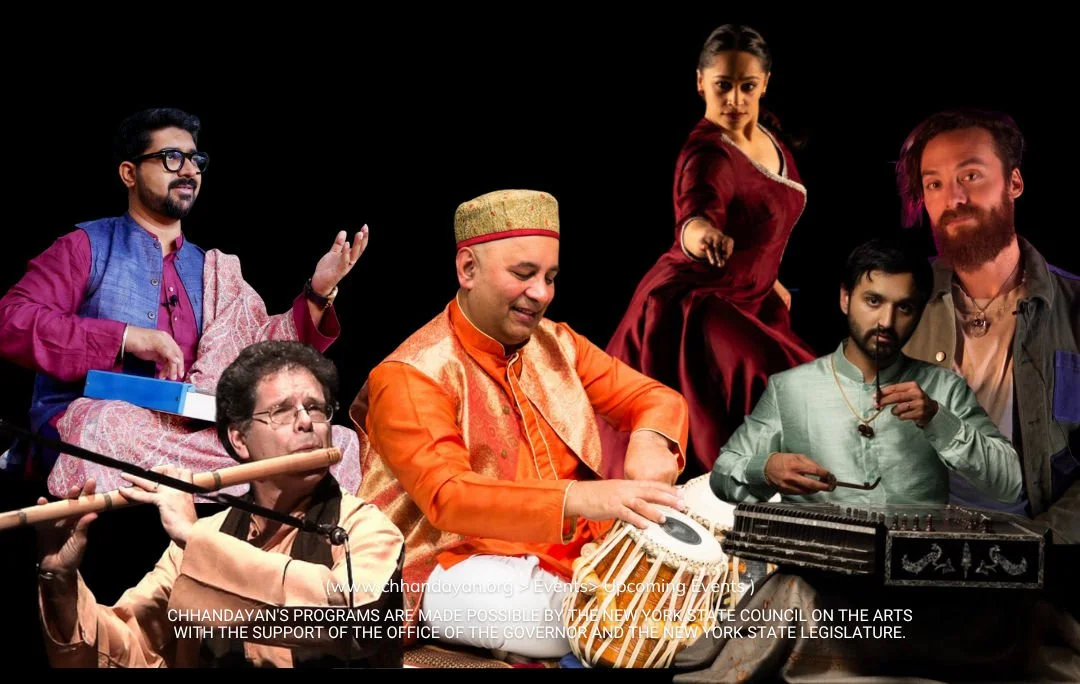The Sensory Experiences of Indian Music
A Chhandayan Production
Out of a three-week residency
Supported by the New York State Council on the Arts
Steve Gorn (bansuri)
Kaustuv Kanti Ganguli (Voice)
Vinay Desai (Santoor)
Samir Chatterjee (Tabla)
Priyanka Tope (Dance)
Adam Taylor (light design)
Sharv Dave (Scientific research)
Prakriti – Nature
Samay – Time
Rasa – Essence, Emotion, Mood
You are warmly invited to an immersive performance of sound, silence, and sensorial depth to be presented by Chhandayan at Shanti Mandir, 51 Muktananda Drive, Walden NY 12586, Sunday July 20 at 4pm.
This presentation will mark the culmination of our three-week residency on The Sensory Experiences of Indian Music, graciously supported by the New York State Council on the Arts. During these three weeks, we have been exploring the affects of Indian music through sensory integration.
We would like to share the essence of our probe in a 90-minute multi-sensory performance, followed by space for reflections, and a shared dinner with the artists.
To honor the subtlety of this offering, we kindly request that guests:
Arrive 30 minutes early to settle into the quietness of the space,
Avoid socializing upon arrival, and embrace a gentle, inward presence,
Arrive fresh, free from odor or fragrance,
Arrive free from lingering taste in the palate,
Wear white cotton or natural-fiber clothing — soft textures that invite stillness and allow sound to be absorbed rather than deflected,
Refrain from the use of mobile phones and similar devices, for any purpose and adding sound to the performance,
Participate in a post-performance online survey/feedback.
Because of the nature of the performance, it cannot be streamed. Please do not expect any spoken words to precede the performance.
This won't be just a performance; it is expected to be an attunement — of inner and outer worlds, of breath and vibration — a shared field of resonance.
Admission is free, but space is limited.
If you are interested in attending, please RSVP to info@chhandayan.org as soon as possible so we can plan for seating and attendance. Please wait for a reply from us.
Music as a Multisensory Experience
Music has a remarkable ability to engage multiple senses simultaneously, creating a rich, holistic sensory experience. Auditory stimulation combines with physical movement and emotional response to activate diverse pathways in the brain. Beyond the auditory system, music engages tactile, visual, and proprioceptive senses, offering a dynamic and layered sensory input.
One of music’s unique strengths lies in its ability to influence how we process sensory information. The steady rhythms and repetitive structures found in music help coordinate and organize sensory input—especially beneficial for individuals with sensory processing challenges. Music provides a predictable and structured environment, supporting self-regulation, attention, and focus. It can also help modulate levels of alertness, making it easier to adapt to various sensory stimuli.
Benefits of Music in Sensory Integration
Music offers a wide range of benefits when integrated into sensory-based practices. Its ability to engage multiple senses simultaneously makes it a powerful tool for enhancing sensory processing, motor development, emotional regulation, and social connection.
One of the primary benefits is improved sensory processing. Music helps the brain organize and interpret sensory information more effectively. Music also supports the development of motor skills. Musical activities promote coordination, balance, and fine and gross motor control.
Rhythmic movement reinforces sensorimotor pathways and encourages physical engagement. In addition, music fosters emotional and social growth. It provides a safe space for emotional exploration and self-expression, which promotes emotional awareness and regulation.
Participating in group music therapy encourages social interaction, cooperation, turn-taking, and nonverbal communication, helping individuals build confidence and connection.
One of music’s key strengths is its ability to regulate sensory experiences. Elements like rhythm, tempo, and dynamics can influence levels of arousal and attention. Calming music can reduce anxiety and overstimulation, while upbeat, rhythmic music can promote alertness and focus. Through guided music therapy, individuals can learn strategies to better manage their sensory environment.
In essence, music is a transformative force in sensory integration. It not only nurtures the senses but also empowers individuals to regulate their emotions, express themselves, and engage more fully with the world around them.
To effectively use music for sensory processing improvement, it is important to create a sensory-friendly environment. This includes using soundproofing materials, adjusting volume levels, and selecting appropriate types of music based on individual needs and sensitivities.
Incorporating music into daily routines can also be beneficial. For instance, playing calming music during mealtimes or baths can create a soothing atmosphere and reduce stress, particularly for individuals with heightened sensory sensitivity.
Therapeutic listening, rhythmic entrainment, or musical improvisation can be used to target specific sensory challenges. These structured, personalized approaches provide meaningful opportunities for sensory regulation and integration, supporting overall well-being.

